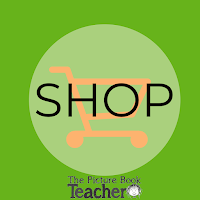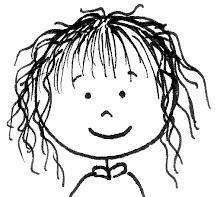How does this tiny seed turn into such a big beautiful flower? Author Eric Carle takes us on this little seed’s journey as it travels from its seed pod to its final resting place. Carle then gives us a peek into how this seed transforms, starting with its roots and ending with its beautiful petals and the loss of its own seeds. Along this journey the reader is witness to the trials and tribulations that other seeds and plants have in their own travels and transformations.
The illustrations are creatively painted to bring us up close and personal into the lives of the many seeds that leave the pod. Your students will delight in the artwork, as well appreciate the creative way Carle informs and explains the life of a tiny seed.
Below is a list of reading skills, strategies and ideas you can use to create a meaningful lesson, one that not only has your students discovering information on the life of a tiny seed but also using a beloved book for learning and practicing these important reading skills/strategies.
Because the book is so wonderful, I have created a skills and strategies packet to go with it, but please keep in mind, it is strictly for finding, using and practicing reading skills and strategies and not a word find, life cycle “companion piece” to the book.
Reading level: 3.2
Theme: life cycles, habitat, garden
Genre: informational
Suggested Vocabulary: Autumn looms
Reading skills and strategies:
- purpose for reading – to learn the life cycle of a plant
- author's purpose – inform {evidence} the author explains what happens to the tiny seed in each season. The author explains about all the different things that could make a seed or plant die. The author explains where flower seeds come from. All the things the author writes about informs the reader of plants and how they grow.
- organization
- Sequence – the book is written in seasonal sequential order explaining the whole plant life-cycle.
- classify & categorize – classify seasons, categorize things that happen in those seasons
- compare & contrast – the different seasons.
- fact & opinion – {facts} the tiny seed cannot grow in the hot dry desert. The tiny seed is so small the bird does not see it. The rain waters the tiny seed. The tiny seed turns into a big flower. {opinions} All children pick flowers. The wind always blows seeds over the ocean. Nothing ever grows in the desert because it is too hot. Tiny seeds always produce big flowers.
- main idea & details - {main idea} The book is about the life of a tiny seed. {details} The tiny seed sails through the sky. The tiny seed settles into the ground for a long winters nap. The tiny seed grows into a great big flower. normal
- story elements - list title, author, topic, organization, KWL
- summarize main idea – {author} Eric Carle wrote {book title} The Tiny Seed {author’s purpose} to inform its readers {statement about topic} of the life cycle of a plant. {at least 2 detail} Carle tells its readers what happens to a seed during each of the 4 seasons as well as when it lands in the hot dry desert. He also explains that a blanket of snow covers the seed like a soft white blanket during the summer.
Here is a list of skills and strategies included in the packet. The reason for the number of pages is because they are differentiated so you can accommodate your students’ needs.
* Asking Questions - 6 pages
* Author's Purpose - 3 pages
* Compare and Contrast - 6 pages
* Fact and Opinion - 3 pages
* Main Idea and Details - 4 pages
* Predict - 3 pages
* Sequencing - 19 pages
* Story Elements - 1 pages
* Summarize - 1 page
* Classify and Categorize - 5 page
* Author vs. Illustrator - 10 pages
* Genre - 4 pages
* Label It! - 4 pages
Happy Spring!











No comments
Thoughts and comments are always welcome!